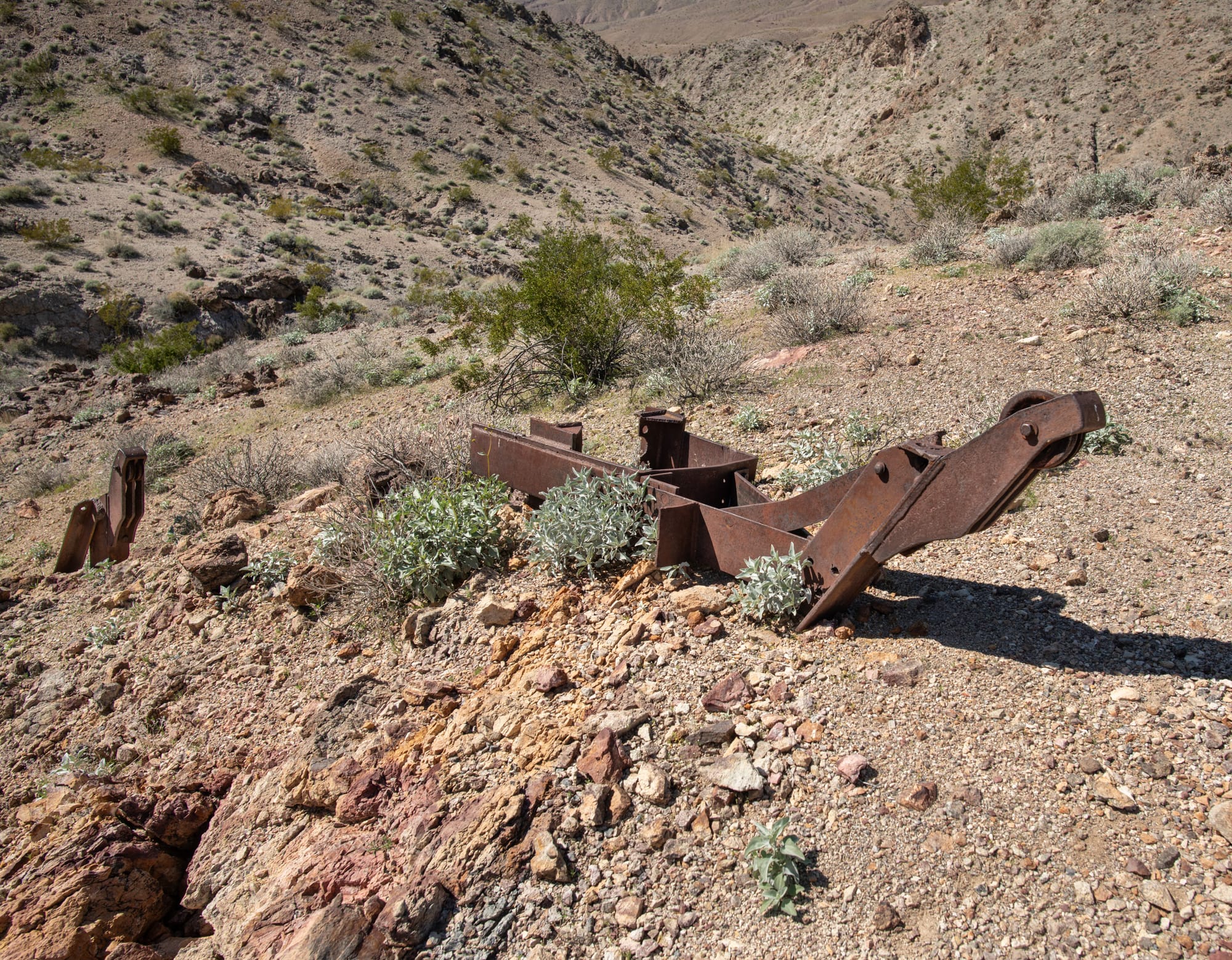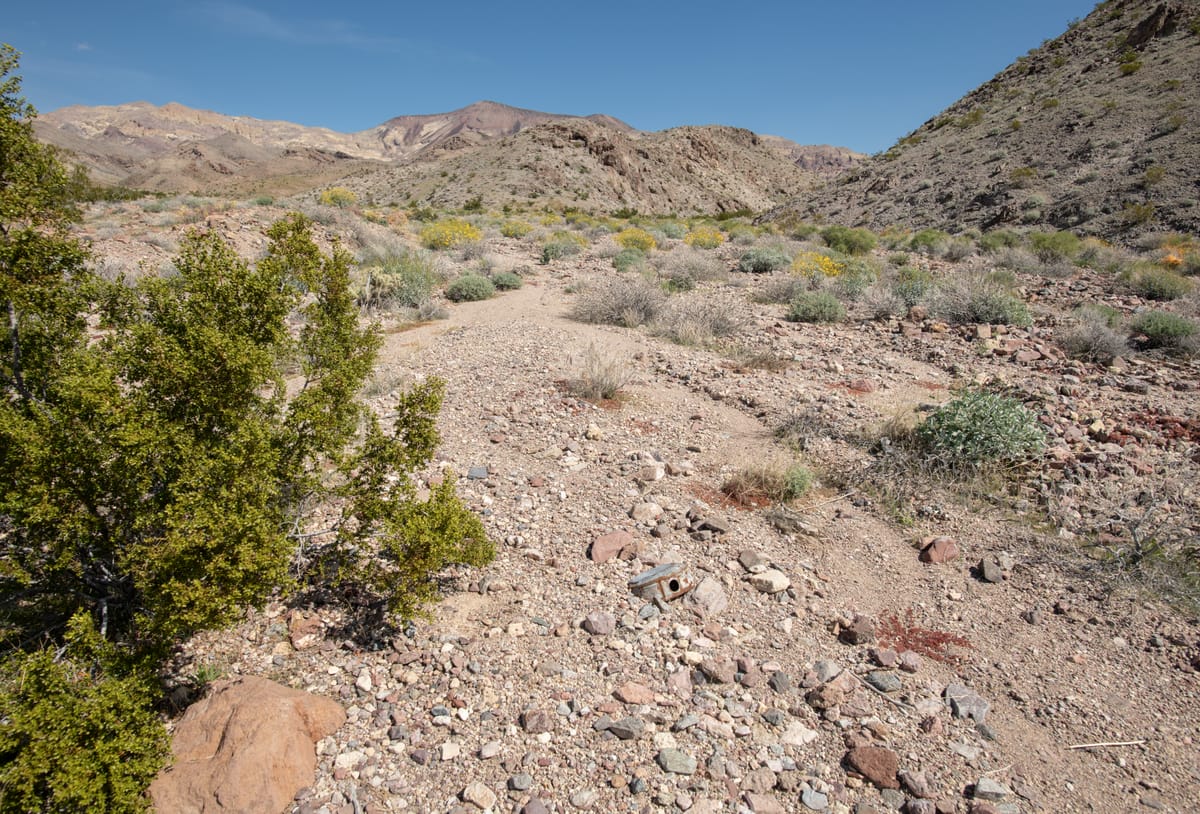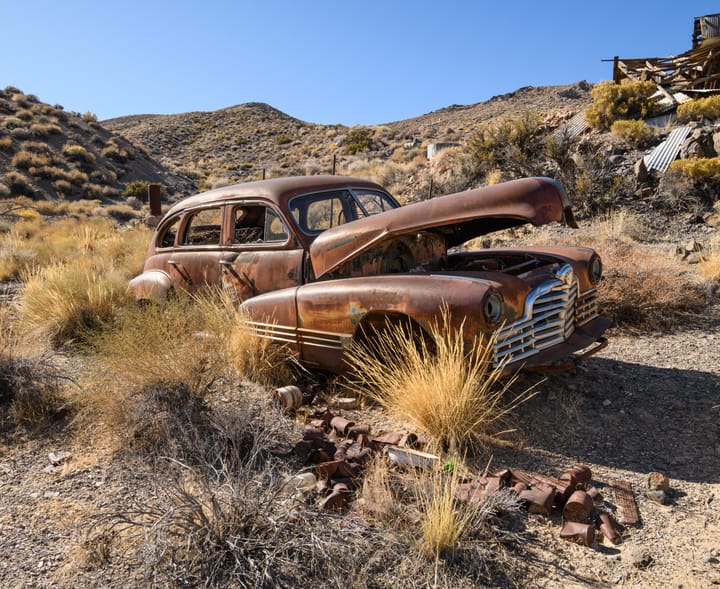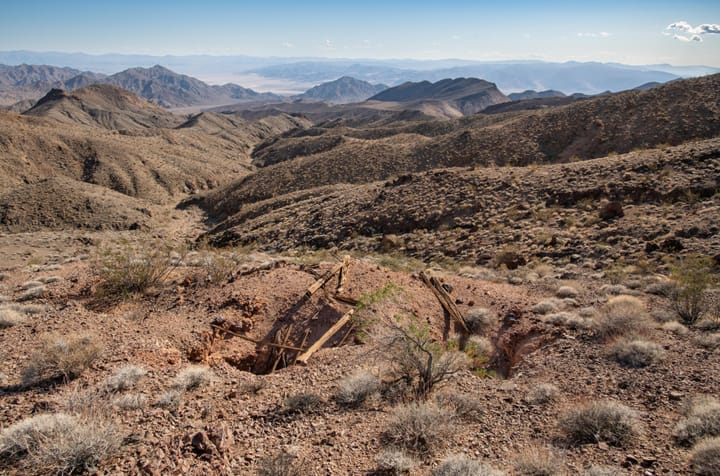Albert G. Rhodes is nearly forgotten in desert lore, but he and his partner discovered a rich silver deposit in 1886 at the remote southeastern end of the Black Mountains of Death Valley. They hauled 1,200 pounds of silver ore on the backs of mules over eighty desolate miles to Daggett. Rhodes and his group of potential investors disappeared on their way back to the rich find. Their bodies were never found.
The mine was forgotten for nearly two decades until the Greenwater boom brought a rush of prospectors to the area. A group of prospectors rediscovered the workings in 1905, and reopened the mine.
The rediscovery launched a prospecting boom in the area, leading to several other small claims being staked. The remote location and high shipping costs meant that most of the claims would not be profitable. Even worse, most of the high-grade ore deposits were found to be isolated pockets, and the Panic of 1907 was the final nail in the coffin for most mines in the area.
One last flurry of activity occurred in 1908, when W.P. Graham and two partners discovered a rich gold deposit high in the Black Mountains. A road was built to the Graham Mine, but even that venture was short-lived when it became apparent that only a small high-grade pocket of ore had been found. The "Rhodes Spring Mining District" was soon abandoned for good.
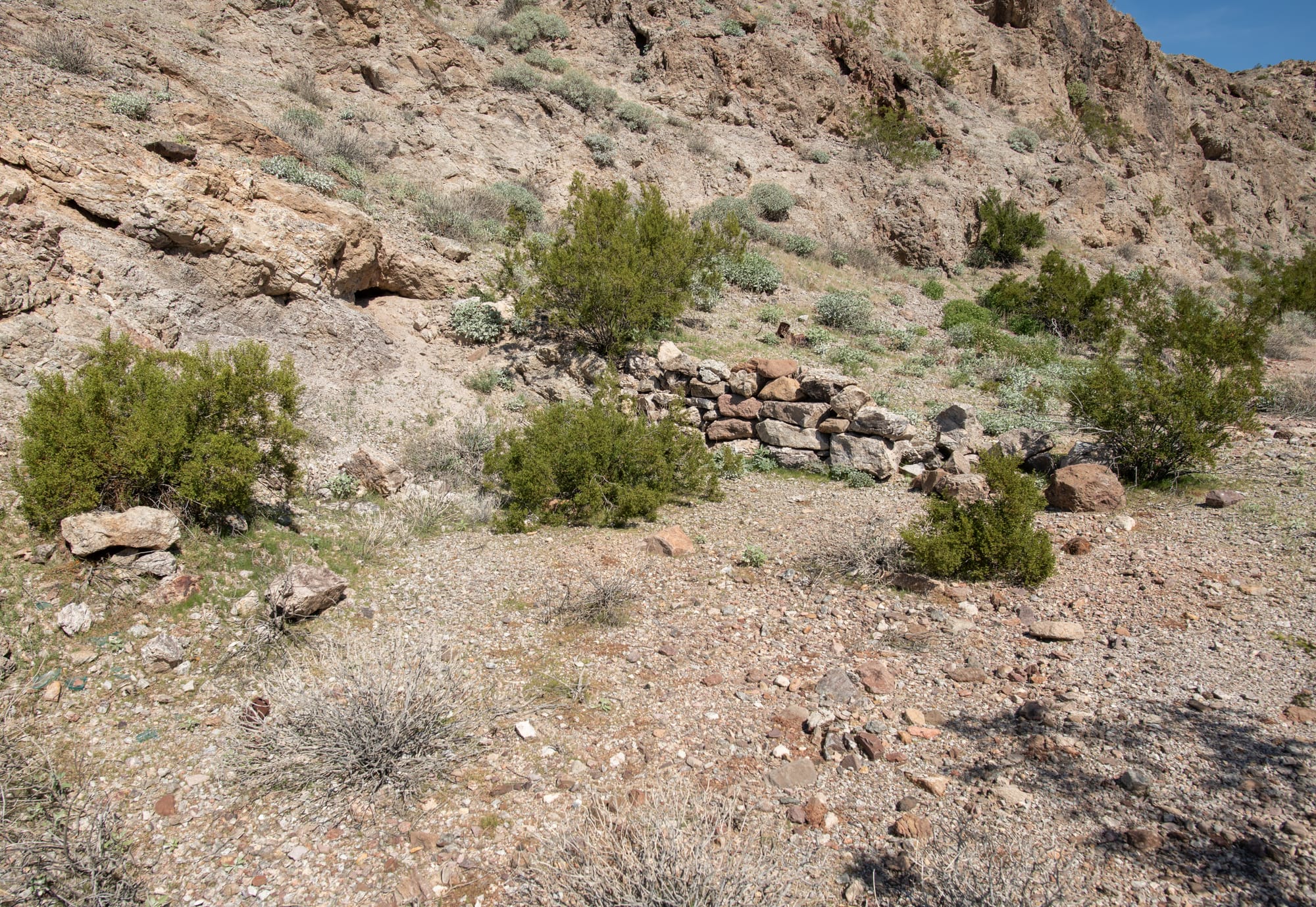
Very little historical documentation about the area survives today, likely due to the lack of successful mines. A review of historical topo maps shows only a couple of old roads, which have mostly melted back into the desert. Small prospects and scattered segments of old trails are visible on Google Earth, but nothing definitive stands out.
For years, I have been curious about a road depicted on old topo maps, which at one time led north from the current Hwy 178, dead-ending in a small canyon in the southern Black Mountains. A close inspection on Google Earth revealed one short remaining road segment, which climbs a steep slope near the head of the canyon. At the end of the road segment, apparent signs of excavation are visible.
Although I could find no positive evidence of a mine, such as a structure, the clues were adding up. Could this be the "Lost Rhodes Mine"? I asked Guy to investigate. His research turned up no additional clues, but he was able to confirm that there was something visible there: an old road segment with a rock retaining wall, as well as some type of excavation at the end of the road. This was more than "just a prospect"— we would have to go see what was there.
